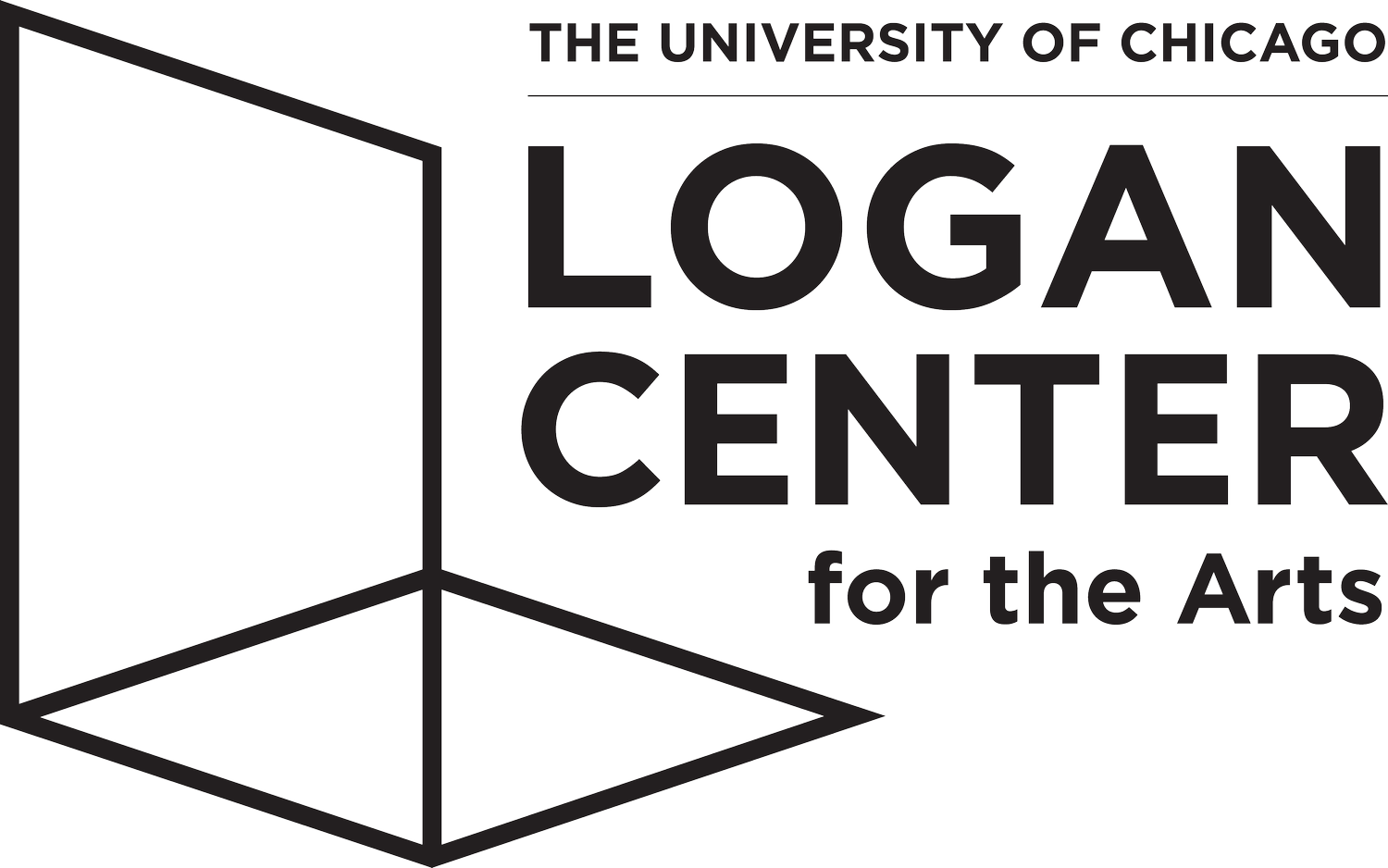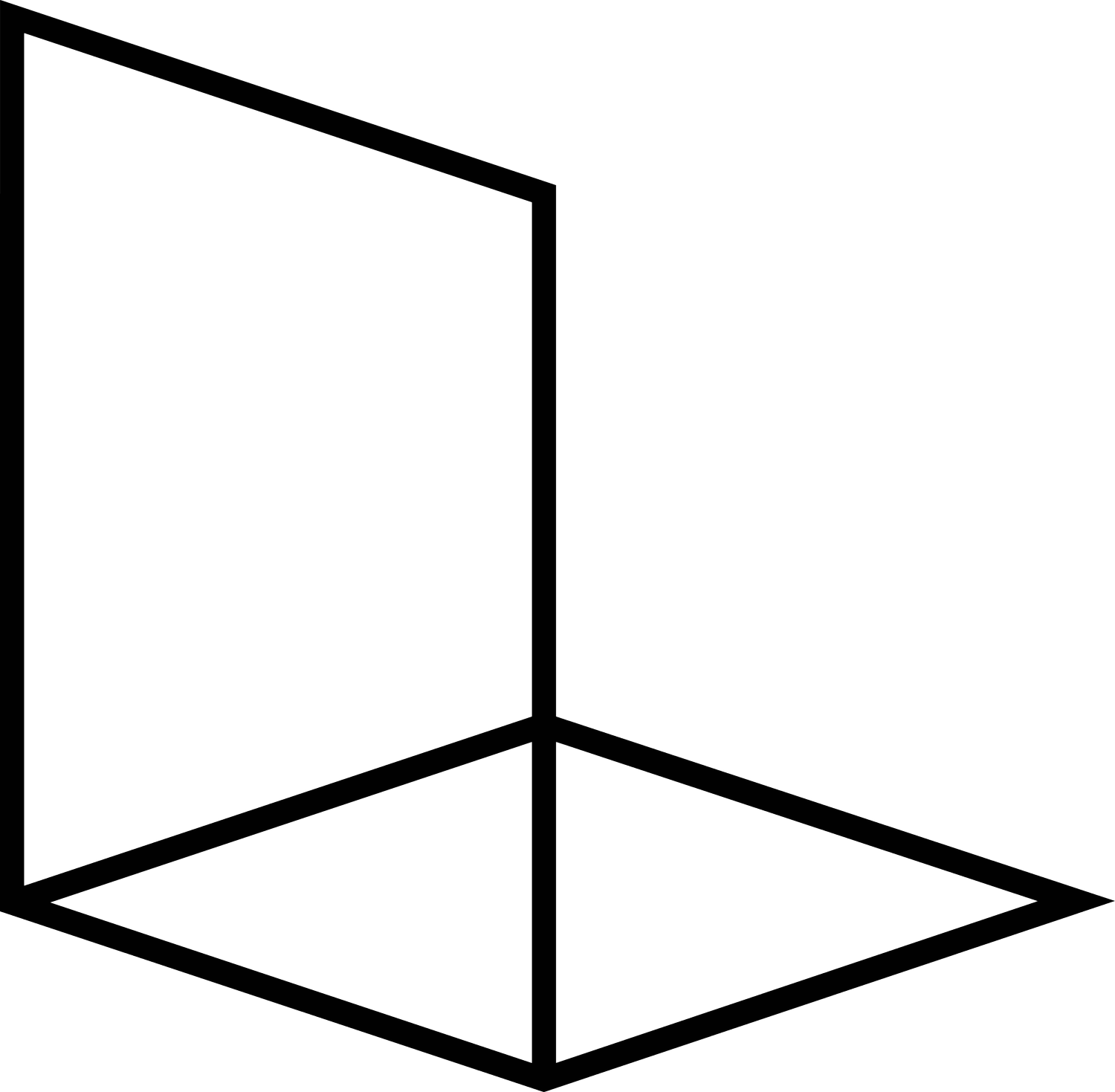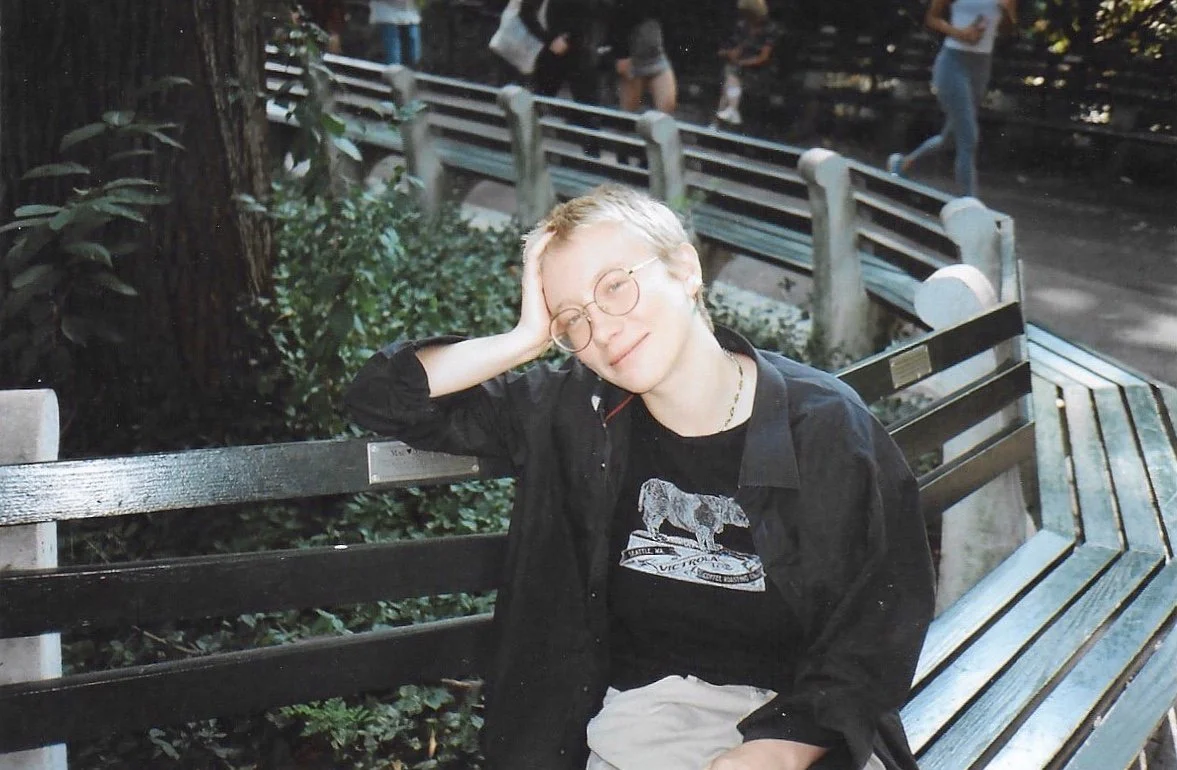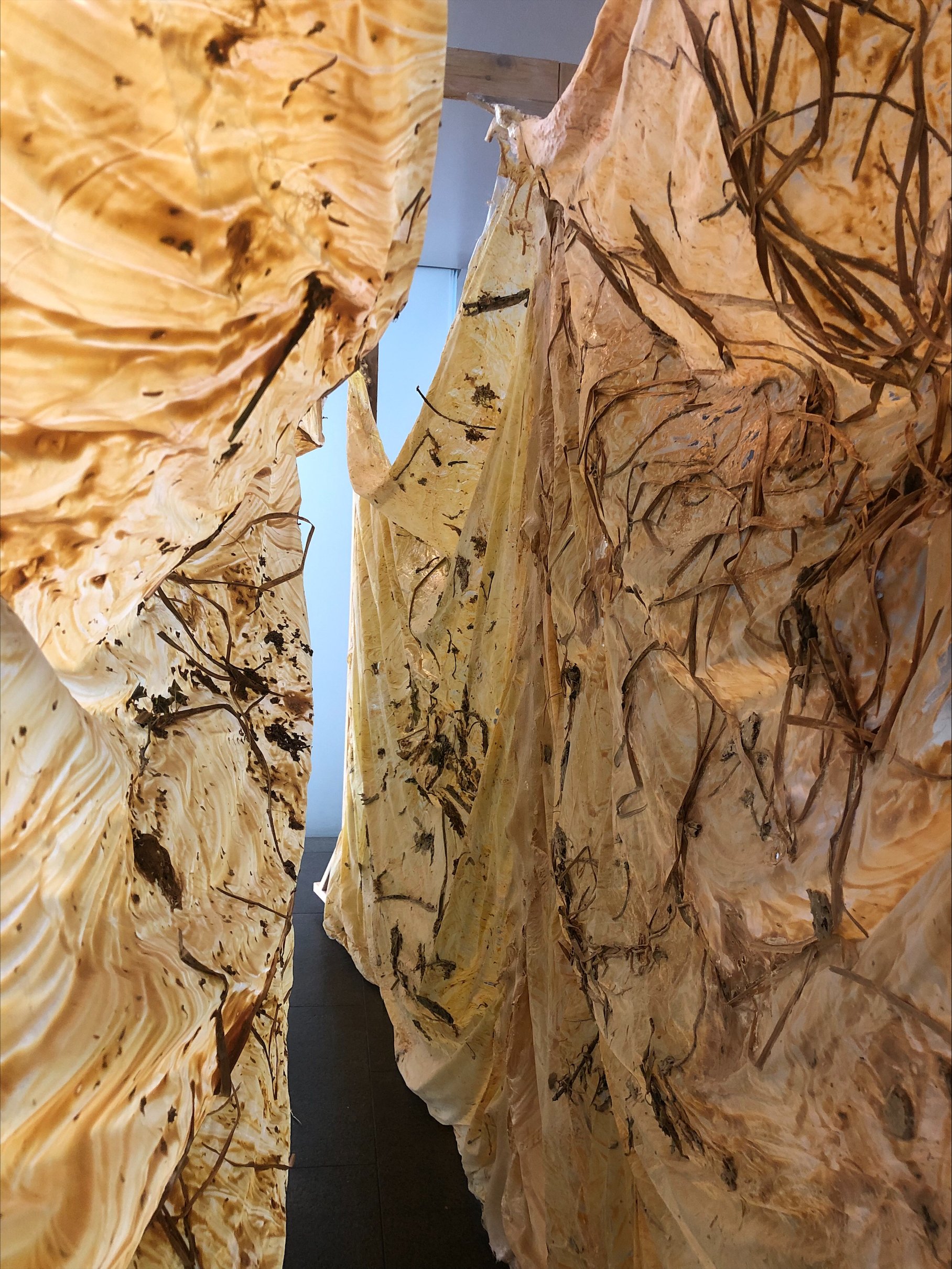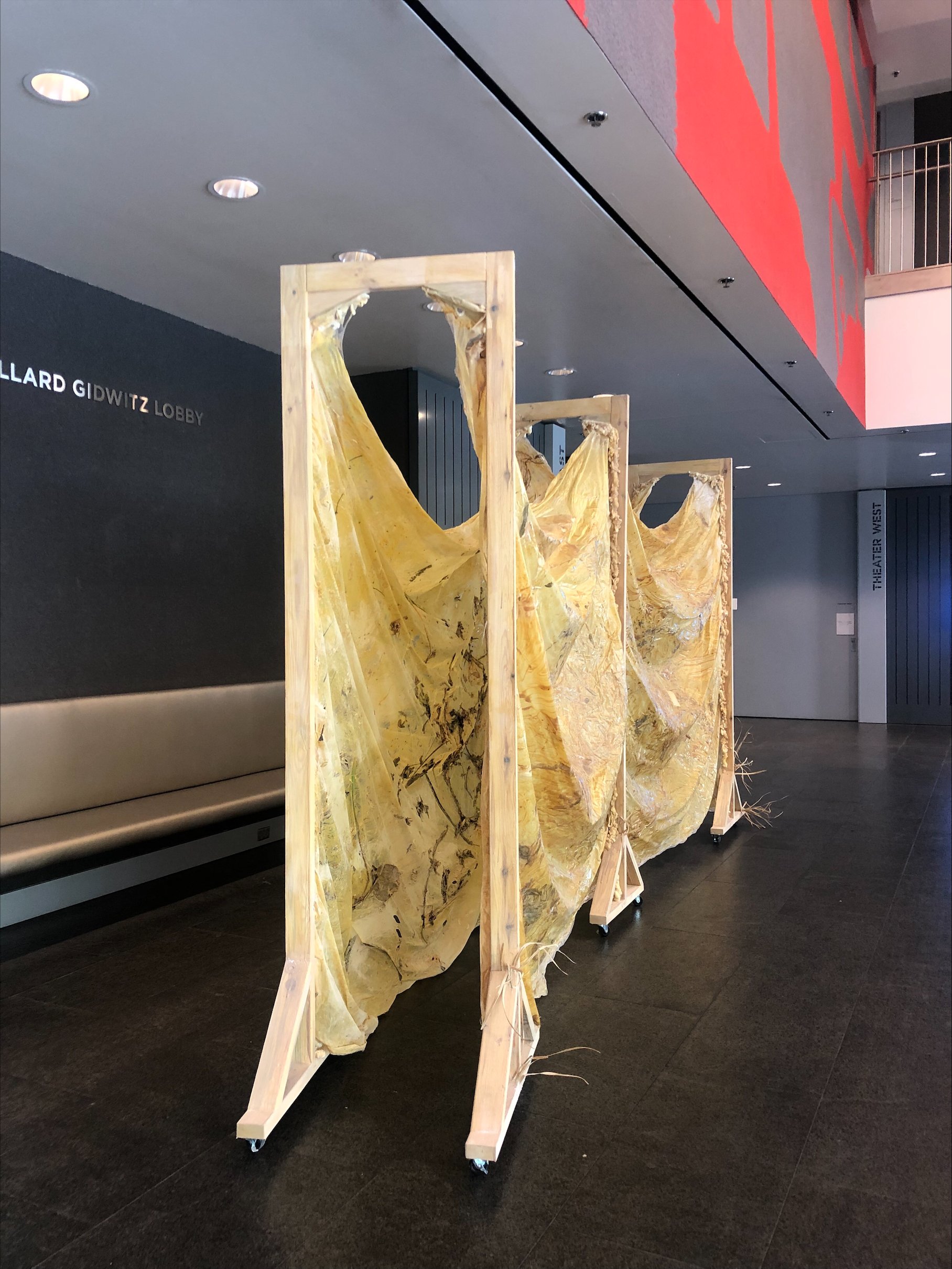Logan Center Co-Creation Grant 2022-23
gulch
THE PROJECT
Pressure Treated Lumber, Liquid Latex, Acrylic Paint, Polyurethane Plastic Sheeting, Insulating Spray Foam, Cornstarch, Fiberglass, Polyester Resin, Plastic Caster Wheels, Hyde Park Detritus
93” x 192” x 26”
gulch swallows the viewer in a tactile experience of plant matter and detritus suspended in the mucosa of latex. The emergent space, radically foregrounding interiority, questions the unconscious tension between our bodies and constructed space.
Inspired by the contemporary queer minimalism of Eva Hesse and Bruce Nauman, the Logan Center Co-Creation Grant allowed for material and conceptual exploration into public installation, resulting in an interactive experience for the wider community.
gulch is a mobile artwork. Mounted on wheels, the exhibition is able to be relocated to various spaces throughout the Logan Center. Visitors may view gulch in the Upper Gidwitz Lobby, or at the South Cantilever Lounge on Level Two, or may encounter it in a completely unexpected space. gulch will be on display until Sunday, June 4, 2023.
THE PEOPLE
THE PARTS
In viewing gulch, one may find themself confronted with questions like, “How does my own body interact with toxicity and the earth? How are we at a crossroads between the natural and the artificial in the spaces we encounter and inhabit daily?”
-
Juxtaposed draping panels of semi-opaque latex suspends a dense tactile network of organic detritus. Simultaneously organic and industrial, the segments form a tall, thin corridor that entices the viewer to enter and brush their hands along the axiomatic structure. As the installation squeezes and hugs the viewer, moving from a visual to tactile experience, they become integrated into the work. The materials one finds themselves surrounded by maintain a skin-like quality. The smoothness of the fleshy barriers is upset by rocks and other found materials. One may find themself confronted with questions like, “How does my own body interact with toxicity and the earth? How are we at a crossroads between the natural and the artificial in the spaces we encounter and inhabit daily?”
Looming yet approachable, grotesque yet enticing, the piece is a manifestation of both artists’ and audiences fascination in materiality, absurdity, and incongruities. Questions of stewardship arise as the affected work transfers from artists to space to viewer. A continuation of existing axiomatic structures such as Bruce Nauman’s Green Light Corridor and Eva Hesse’s Expanded Expansion, the work seeks to elucidate an audience's contextual transition from the visual to the tactile. Drawing on the pedagogy of postmodern sculpture, the ideological emphasis defines the form as it blurs boundaries between structure, sculpture, and installation. Through the process of installation and audience interaction, the dynamics of control and the change of the piece over time are highlighted. Audiences jostling of the work, remnants of passing through, and tearing of the latex all contribute to indeterminate queries into the idea of ownership.
Regarding its construction, the piece will be approximately 16 feet long (equidistant to 6 average stride lengths) by 10 feet high and composed of semi-opaque silicone sheets poured over thin fabric. This rubberized cloth will be stretched between a total of 6 wooden braces, constituting a corridor composed of three braces on each side. The two sides of this makeshift hallway would be spaced opposite each other at a distance of approximately 20 inches (slightly wider than the average male chest width). The dimensions of this hallway are based upon a kinematic approach to furniture design, however with experimentation they will be finalized to suit all members of the general public. The latex will be colored to an aged yellow and contain a gradient network of pebbles, branches, leaves, bark, etc. gathered from around the south of Chicago. The wooden supports would be covered by the same silicon and organic materials to draw a consistent line through the piece.
Being an installation to be handled and interacted with by the wider public, safety is of the utmost concern in the process of its design and construction. The opposite facing wooden supports and top braced to one another, ensuring structural integrity. Weighted legs and rubberized footings will keep the display in place while it is handled by the public, as well as minimize movement. Powderized top coats and sealants placed on the surface of the silicone sheeting allows for non-adhesive contact to occur.
An ideal location for this work is a highly visible space with ample room to allow for a complete viewing of the structure. The Gidwitz Lobby within the Logan Center offers both of these characteristics in excess, however we are open to working in another location. Within this space passersby would be invited to step through the hallway, touch the sides, and stay for as long as they please. The finalized dimensions of the work as well as the space in which it is placed should ideally fulfill both these criteria.
-
Utilizing Logan Center spaces such as the Woodshop and Metal Shop, we will be able to experiment, fabricate, and install the proposed work as both artists lack studios. Throughout the entirety of the process, Logan Center staff will be an invaluable resource for its successful completion. Woodshop staff members such as Rooke Hyde possess in-depth knowledge of best practices of fabrication and design. Under the mentorship of installation professionals such as Marcus Warren, we will have access to the insight to safely install the work for public interaction.
-
The scale and material costs of the proposed work is prohibitively expensive for undergraduate artists. Funding for the proposal would allow for ample experimentation which we would otherwise be unable to undertake, as well as a practical implementation of our findings.
Though we both have experience in larger-scale and interactive works, this would be our first time endeavoring to create something of this size and intensive interactivity. As such the ramifications for our personal practices would be immense as the rigorous planning, construction, and installation will push our artistry both technically and conceptually.
Furthermore, it would push the innovation of art displayed within the Logan Center as interactive installation work is rarely within the space.
Artists’ sketch of gulch.
